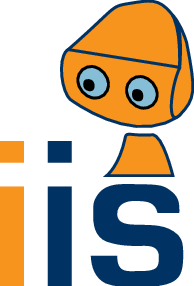User Tools
Site Tools
research:appearance-models
Differences
This shows you the differences between two versions of the page.
| Both sides previous revision Previous revision Next revision | Previous revision Next revision Both sides next revision | ||
|
research:appearance-models [2013/07/13 09:59] c7031009 |
research:appearance-models [2013/07/16 19:48] c7031007 |
||
|---|---|---|---|
| Line 1: | Line 1: | ||
| ====== Probabilistic Models of Appearance for Object Recognition and Pose Estimation ====== | ====== Probabilistic Models of Appearance for Object Recognition and Pose Estimation ====== | ||
| - | {{ :research:teney-2013-crv4.jpg?nolink&300}} We developped probabilistic models to encode the appearance of objects, and inference methods to perform **detection (localization) and pose estimation** of those object **in 2D images** of cluttered scenes. Some of our early work used 3D, CAD-style models ([[@/publications#Teney-2011-DAGM|Teney et al. 2011]]), but we then solely focused on **appearance-based models** ([[@/publications#Teney-2012-DICTA|Teney et al. 2012]]). Those are trained using 2D example images alone, the goal being here to leverage, to a maximum, the information conveyed by 2D images, without resorting to stereo or other 3D sensing techniques. Our models are identically applicable to either specific object instances, or to object categories/classes ([[@/publications#Teney-2013-CRV|Teney et al. 2013]]). The appearance is modeled as a **distributions of low-level, fine-grained image features**. The strength of the approach is its straightforward formulation, applicable to virtually any type of image feature. We have applied the method to different types of such low-level features: points along image edges, and intensity gradients extracted densely over the image. | + | {{ :research:teney-2013-crv4.jpg?nolink&300}} We developed probabilistic models to encode the appearance of objects, and inference methods to perform **detection (localization) and pose estimation** of those object **in 2D images** of cluttered scenes. Some of our early work used 3D, CAD-style models ([[@/publications#Teney-2011-DAGM|Teney et al. 2011]]), but we then solely focused on **appearance-based models** ([[@/publications#Teney-2012-DICTA|Teney et al. 2012]]). Those are trained using 2D example images alone, the goal being here to leverage, to a maximum, the information conveyed by 2D images, without resorting to stereo or other 3D sensing techniques. Our models are identically applicable to either specific object instances, or to object categories/classes ([[@/publications#Teney-2013-CRV|Teney et al. 2013]]). The appearance is modeled as a **distribution of low-level, fine-grained image features**. The strength of the approach is its straightforward formulation, applicable to virtually any type of image feature. We have applied the method to different types of such low-level features: points along image edges, and intensity gradients extracted densely over the image. |
| <html><div style="clear:both"></div><br></html> | <html><div style="clear:both"></div><br></html> | ||
| - | {{ :research:teney-2013-crv3.jpg?nolink&260}} {{ :research:teney-2013-crv.jpg?nolink&245}} Such models of appearance have been applied to the tasks of object detection/localization, object recognition, and pose classification (by matching the test view with one of several trained viewpoints of the object). A notable advantage of the proposed model is its **ability to use dense gradients directly** (extracted over entire images), versus relying on typical hand-crafted image descriptors. Using gradients extracted at a coarse scale over the images allows one to use shading and homogeneous regions to recognize untextured objects, when edges alone would be ambiguous. | + | {{ :research:teney-2013-crv3.jpg?nolink&260}} {{ :research:teney-2013-crv.jpg?nolink&245}} Such models of appearance have been applied to the tasks of object detection/localization, object recognition, and pose classification (by matching the test view with one of several trained viewpoints of the object). A notable advantage of the proposed model is its **ability to use dense gradients directly** (extracted over entire images), versus relying on typical hand-crafted image descriptors. Using gradients extracted at a coarse scale over the images allows us to **use shading and homogeneous regions** to recognize untextured objects, when edges alone would be ambiguous. |
| <html><div style="clear:both"></div><br><br></html> | <html><div style="clear:both"></div><br><br></html> | ||
research/appearance-models.txt · Last modified: 2018/09/03 19:35 (external edit)

